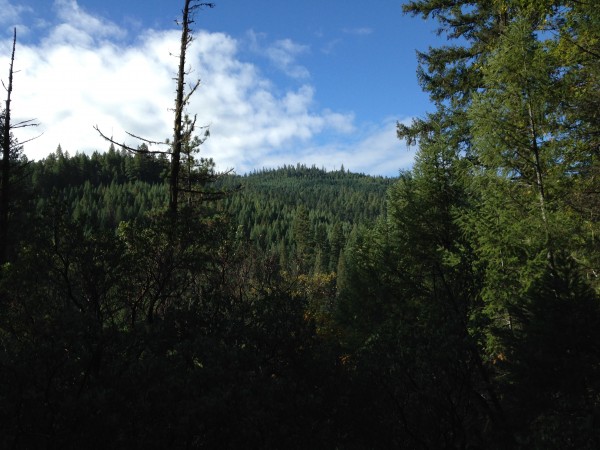 The proposed wilderness contains what is possibly the largest, most intact swath of unprotected ancient forest in northern California.
The proposed wilderness contains what is possibly the largest, most intact swath of unprotected ancient forest in northern California.
Extremely rich groves of douglas fir, ponderosa pine, Jeffrey pine, black oak, and incense cedar cover much of the area.
Chinquapin, usually a shrub, grows in an extremely rare tree-form here. Some of these giant chinquapin reach heights of 80 feet or more.
Bald eagle, fisher, marten, Howell’s lewisia (an ornate purple and white flower), Niles’ madia (a yellow-flowered plant with a sage-like smell), pale yellow stonecrop (a succulent), and the tall, slender Umpqua green gentian plant are just a few of the rare or endangered species that call this area home.
According to Forest Service data, Chinquapin is an integral part of the largest and densest populations of northern spotted owls and goshawks in the Trinity side of the two million-acre Shasta-Trinity National Forest. Coho and Chinook salmon and steelhead trout also live in the South Fork Trinity Proposed Wild and Scenic River which bisects the area.
The popular South Fork National Recreation Trail also passes through Chinquapin, following the river and offering excellent swimming, hiking, and horseback riding opportunities.

